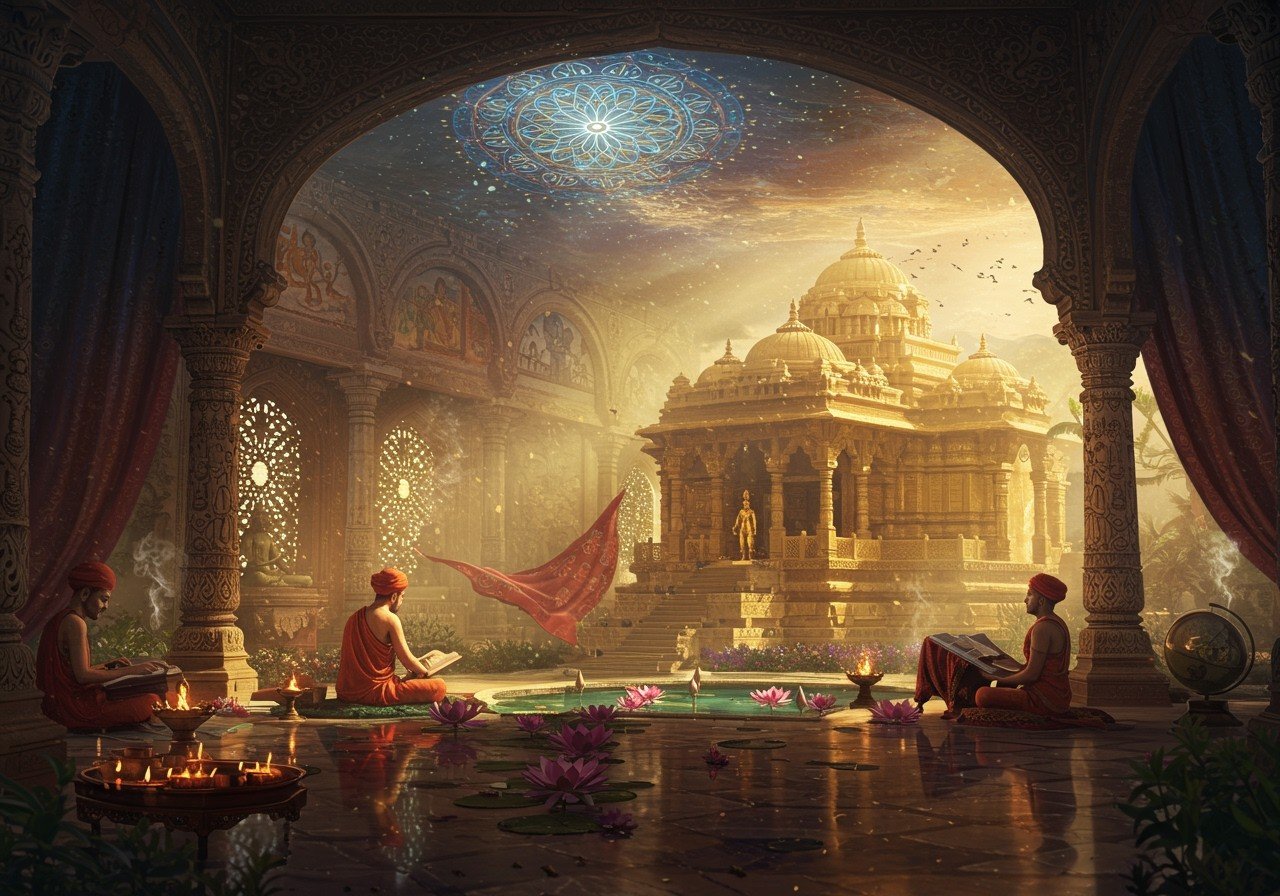
The Gupta Era, often hailed as the Golden Age of India (circa 320 CE to 550 CE), witnessed remarkable advancements in various fields, including arts, science, and spirituality. This period saw a resurgence of Hinduism, with rulers actively promoting the religion through temple construction and Vedic rituals. It also witnessed the development of an “ideal image” of the Buddha, influencing artistic representations for centuries to come. The Gupta Empire, known for its prosperity, stability, and religious tolerance, left a lasting impact on India’s cultural and religious landscape. This blog delves into the spiritual heritage of the Gupta Era, exploring its temple architecture, the rise of devotional Hinduism, and the significance of its religious texts and philosophies.
Temple Architecture During the Gupta Period
The Gupta period is renowned for its distinctive temple architecture. Structures like the Dashavatara Temple in Deogarh and the Vishnu Temple in Tigawa exemplify the intricate carvings and detailed iconography of the era. The introduction of the shikhara (tower), a defining feature of North Indian temple design, originated during this time.
The use of stone as the primary building material allowed for the construction of more durable and elaborate temples. The Gupta style significantly influenced later architectural developments, such as the Nagara, Dravida, and Vesara styles. The symmetry and geometric precision evident in these temples reflect the Guptas’ advanced understanding of mathematics and aesthetics. These temples served not only as places of worship but also as hubs for social and cultural activities, playing a vital role in daily life. Preserving and restoring these ancient temples is crucial to keeping the legacy of Gupta architecture alive.
The Rise of Devotional Hinduism
The Gupta Era marked a significant rise in devotional (bhakti) Hinduism. This movement emphasized personal devotion to a chosen deity, making spiritual practices more accessible to the masses. The worship of gods like Vishnu, Shiva, and Devi became widespread, leading to the construction of numerous temples dedicated to these deities. Devotion found expression through various art forms, including poetry, music, and dance, with numerous devotional hymns and texts composed during this period. Prominent Hindu sects like Vaishnavism and Shaivism developed distinct rituals and philosophies. The emphasis on personal devotion contributed to the widespread popularity of Hinduism, integrating local traditions into mainstream Hindu practices and fostering cultural unity. The bhakti movement encouraged participation from all social strata, promoting community and spiritual equality.
The Significance of Religious Texts and Philosophies
The Gupta period witnessed the creation of important religious texts that continue to influence Hindu thought today. The Puranas, encyclopedic texts containing myths, legends, and genealogies of gods, heroes, and sages, were compiled during this time, playing a crucial role in disseminating Hindu myths and rituals. This era also saw the development of the six orthodox philosophical schools: Nyaya, Vaisheshika, Samkhya, Yoga, Mimamsa, and Vedanta. Each school offered a systematic framework for understanding reality, the self, and the divine. The Bhagavad Gita gained prominence during this period, becoming a central text for the bhakti movement and emphasizing devotion, righteousness, and spiritual knowledge. Buddhist and Jain philosophies also flourished, with scholars like Vasubandhu contributing significantly to Buddhist logic and epistemology. The intellectual environment of the Gupta Era fostered inquiry and debate, leading to the cross-pollination of ideas between different philosophical traditions. The enduring relevance of these texts in contemporary Hindu practice underscores the lasting impact of the Gupta Era on Indian spirituality.
Poojn.in: Connecting You to India’s Rich Spiritual Heritage
Poojn.in, India’s leading online store for cultural and religious goods, offers a wide selection of products to enhance your spiritual journey. Explore our collection of deity idols, puja items, sacred texts, and more, all crafted with authenticity and reverence. We are committed to providing high-quality products that honor the traditions of the Gupta Era and beyond.
- Bel Malas: Discover a variety of Bel Malas, traditionally used in Lord Shiva worship, crafted from high-quality materials.
- Tulsi Malas: Explore our collection of Tulsi Malas, revered for their spiritual significance and connection to Lord Vishnu and Krishna. Choose from various styles and designs.
- Shiva Lingams: Find beautifully crafted Shiva Lingams, representing the divine energy of Lord Shiva, perfect for personal altars and home worship.
- Mangalam Camphor: Enhance your puja rituals with pure Mangalam Camphor, known for its purifying properties and traditional use in Hindu ceremonies.
The Enduring Influence on Modern Indian Society
The spiritual legacy of the Gupta Era continues to shape modern Indian society. Architectural styles from this period serve as inspiration for contemporary temple construction. Devotional practices originating in the Gupta Era remain central to Hindu worship today. Philosophical texts from this period are still studied and revered, providing guidance for spiritual seekers. The inclusive ethos of the Gupta Era contributed to the resilience of Indian spirituality, with personal devotion and community participation fostering a sense of belonging among practitioners. Educational institutions and cultural organizations work to preserve the Gupta Era’s spiritual heritage, ensuring that this rich legacy remains accessible to future generations. The ongoing relevance of the Gupta Era’s spiritual contributions highlights its enduring impact on India’s cultural fabric.
Ramayana’s Impact on Indian Art and Literature
Ramayana’s Influence on Hindu Spirituality


